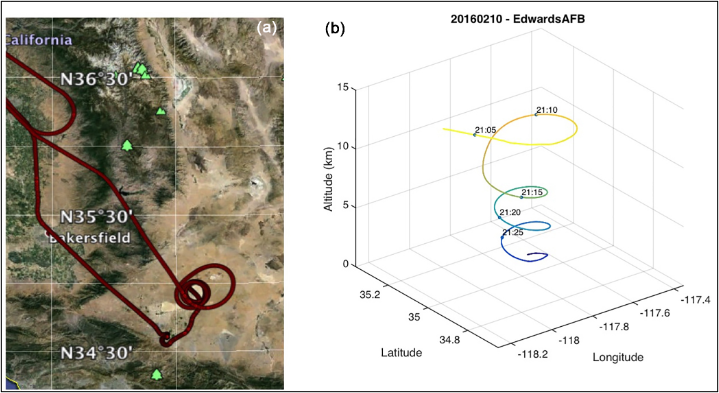The ORNL DAAC recently released a new Active Sensing of CO2 Emissions over Nights, Days, and Seasons (ASCENDS) Airborne Campaign dataset by Abshire, J.B., et al. (2023):
ASCENDS: Active Sensing of CO2 With AVOCET, California and Nevada, 2016
This dataset provides in situ airborne measurements of atmospheric carbon dioxide (CO2) over California and Nevada on February 10-11, 2016. Measurements were taken onboard a DC-8 aircraft during this Active Sensing of CO2 Emissions over Nights, Days and Seasons (ASCENDS) airborne deployment. CO2 was measured with NASA's Atmospheric Vertical Observations of CO2 in the Earth's Troposphere (AVOCET) instrument while over California and Nevada. The objective of this deployment was to assess the performance of the 2016 version of the CO2 Sounder LiDAR. The two flights were flown to compare results from an experimental LiDAR sensor with the AVOCET instrument. Aircraft navigation and flight meteorological data are also provided. The data are provided in ICARTT and comma-separated values (CSV) formats.
The ASCENDS Airborne Campaign was a multi-year effort conducted between 2011 and 2017 to support the science definition study of the Active Sensing of CO2 Emissions over Nights, Days, and Seasons (ASCENDS) mission, whose objective was to make global atmospheric column carbon dioxide (CO2) measurements without a seasonal, latitudinal, or diurnal bias. Through the airborne campaign, several NASA lidar teams made substantial advances in developing suitable lidar techniques and instruments, demonstrating lidar capabilities from aircraft, improving the understanding of the characteristics needed in the measurements, and advancing the technologies needed for the space lidar. The 2017 ASCENDS airborne deployment was flown on the NASA DC-8 in late July and early August 2017 and was planned in coordination with the NASA Arctic-Boreal Vulnerability Experiment (ABoVE) 2017 field campaign.
Additional data from ASCENDS and other relevant links can be found on the ORNL DAAC's ASCENDS Project Page.
Citation: Abshire, J.B., J. Mao, H. Riris, S.R. Kawa, and X. Sun. 2022. ASCENDS: Active Sensing of CO2 With AVOCET, California and Nevada, 2016. ORNL DAAC, Oak Ridge, Tennessee, USA. https://doi.org/10.3334/ORNLDAAC/2115

